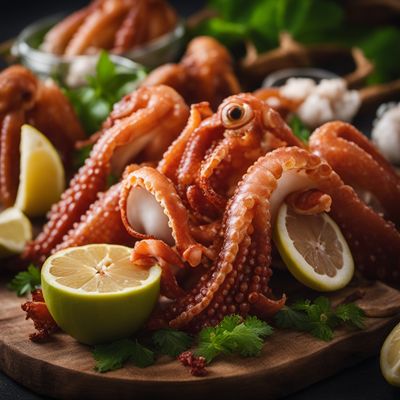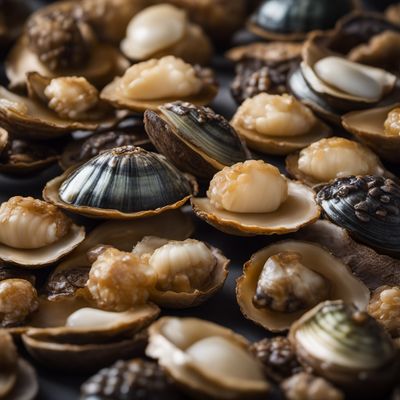
Ingredient
Freshwater molluscs
Delicate Aquatic Gems
Freshwater molluscs, such as clams, mussels, and freshwater oysters, are bivalve mollusks that thrive in freshwater environments. They have a tender, slightly chewy texture and a subtly briny flavor that pairs well with a variety of ingredients. These aquatic gems come in different sizes, shapes, and colors, adding visual appeal to any dish they grace.
Origins and history
Freshwater molluscs have been consumed for centuries and have cultural significance in many regions. They are commonly found in freshwater bodies like lakes, rivers, and ponds, with different species being native to specific areas. Historically, freshwater molluscs have been a staple food source for indigenous communities and have been incorporated into traditional dishes across various cultures.
Nutritional information
Freshwater molluscs are a good source of lean protein, vitamins, and minerals. They are low in fat and calories, making them a healthy addition to a balanced diet. Additionally, they provide essential nutrients like iron, zinc, and vitamin B12.
Allergens
May contain shellfish allergens.
How to select
When selecting freshwater molluscs, choose specimens that are alive and have tightly closed shells. Avoid any with broken or damaged shells, as this may indicate spoilage. Freshwater molluscs should have a fresh, briny smell and should feel heavy for their size. Opt for those that are harvested from clean, unpolluted water sources for the best quality and flavor.
Storage recommendations
To maintain freshness, store live freshwater molluscs in a cool environment with good airflow. Place them in a bowl or container covered with a damp cloth or paper towel to prevent them from drying out. It is best to consume them as soon as possible after purchase for the highest quality and flavor.
How to produce
Freshwater molluscs can be cultivated in controlled environments, such as aquaculture farms or home ponds. However, it requires specialized knowledge and equipment to maintain the optimal conditions for their growth. Consulting with experts or researching specific species' requirements is essential before attempting to produce them.
Preparation tips
Freshwater molluscs can be prepared in various ways, including steaming, boiling, grilling, or baking. They can be enjoyed on their own, served with a flavorful broth, or incorporated into pasta dishes, soups, stews, and seafood medleys. To enhance their natural flavors, consider adding aromatic herbs, garlic, white wine, or lemon juice during cooking.
Culinary uses
Freshwater molluscs are commonly used in dishes like clam chowder, moules marinière, paella, and seafood pasta. They are also popular in Asian cuisines, such as Chinese stir-fries, Thai curries, and Japanese miso soup. Their versatility allows them to shine in both simple and complex recipes, adding a touch of elegance to any meal.
Availability
Freshwater molluscs are commonly available in regions with abundant freshwater sources, such as North America, Europe, Asia, and parts of Africa. They can be found in grocery stores, seafood markets, and specialty seafood suppliers. Additionally, they are often served in restaurants that specialize in seafood or regional cuisine.
More ingredients from this category

Clams, cockles, arkshells
The Ocean Treasures

Squids, cuttlefishes, octopuses
Oceanic Delights

Miscellaneous marine molluscs
Oceanic Treasures: Miscellaneous Marine Molluscs

Mussels
The Ocean's Delicacy

Scallops, pectens
The Delicate Gems of the Sea: Exploring the World of Scallops

Oysters
"Oceanic Delicacy: Exploring the World of Oysters"

Abalones, winkles, conchs
Oceanic Delicacies: Exploring the World of Abalones, Winkles, and Conchs